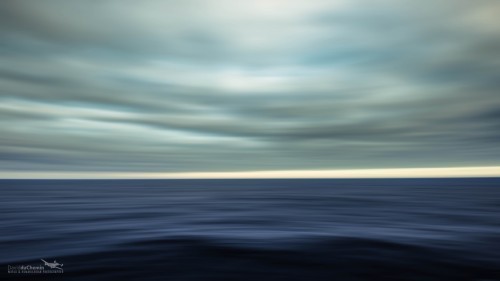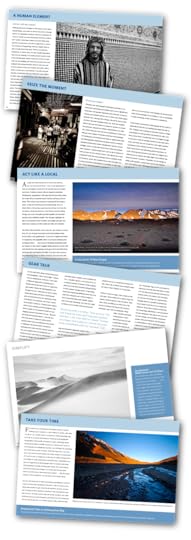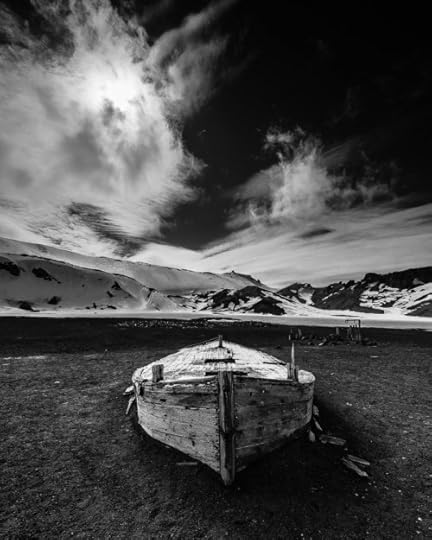David duChemin's Blog, page 41
December 29, 2012
Happy New Year
What a year. I often take some time around now to sit with my pen and notebook, a cup of coffee, and my thoughts. I’m not big on resolutions but I do like to look back at the year and be grateful, think about lessons learned, and celebrate. This year took me to Ethiopia, Kenya, and Tanzania, before I jumped in my Jeep, and headed to Maine, only to be turned back at the border, changing my plans for a year spent largely in the American south west. Instead we drove clear across a snowy Canada, coast to coast, in February before putting me back in Vancouver to find a home again. In April I flew back to Europe to lecture in Switzerland, have an adventure in Sweden, and teach again in Italy.
I spent more of the summer at home than usual, but in July spent 10 days bashing my head against the roof of a 4×4 as we explored Mongolia’s Gobi desert. In August it was B.C.’s famous Whipsaw Trail in the Jeep, then the first Vancouver Gathering before taking off for 3+ weeks to the Canadian Arctic, only to get shot at on the Dempster Highway and freeze my ass off, and come home to photograph Orcas off Vancouver Island, proving that I’m better at photographing stuff that doesn’t move. I spent much of the fall in my Vancouver loft, printing my work and working on various projects, and awaiting the release of my latest book, The Print and the Process. In November it was 2 weeks in Kathmandu, then home to catch a plane for Patagonia and a boat for the Antarctic. Somewhere in there I wrote a couple ebooks, launched PHOTOGRAPH, a digital quarterly magazine for creative photographers, and started my first fine-art book, SEVEN. Right now I’m catching my breath.
For those that keep asking, I’m walking better than ever now, and settling into a new normal. My left foot has healed well, but my right is still quite painful at times and limited in its mobility. Some days are better than others, but I think I’m ready to try some light hikes and get myself back into the wilderness beyond where Emily, my Jeep, can take me. That’s my 2013 project. Speaking of 2013, I’m off to Kenya in January for my first assignment work since the accident. Then it’s to Hokkaido with my friend Martin Bailey. In March I’m doing one of a couple conference appearances in Canada, this one in Bragg Creek, Alberta, and the other in New Brunswick, where I’ll be keynoting with Freeman Patterson, one of my first childhood photographic heroes and a man to whom my focus on vision and intent owes so much. I’m giddy about that one. In April it’s Italy for the month, then home to sail north to photograph grizzly bears in the Khutzeymateen for a week in May, before spending a week exploring the Haida Gwaii. And then it kind of just keeps going, but I think I’m most excited about releasing SEVEN sometime after that trip, and the whole process of printing and binding and making something so personal.
Anyways, much to be grateful for, and as always you are at the top of the list of things in my life for which I give thanks. The image at the top of this post is your January desktop wallpaper, shot on the infamous Drake Passage. You’ll find your own meaning, but to me, at least for today, it speaks of possibility and the beauty of what unknown seas stretch before us. I know I’m early, but Happy New Year, my friends.
December 26, 2012
The Life Creative (2)
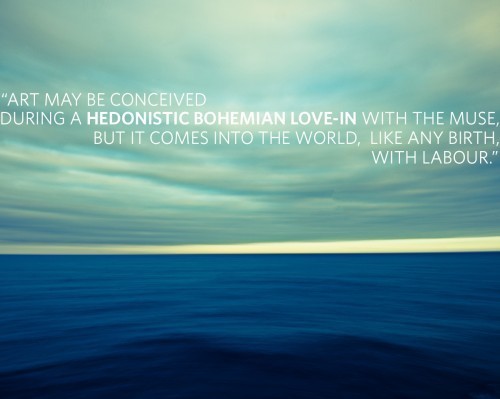 The story goes like this: A student asks Jay Maisel, “How can I make more interesting photographs?” to which Jay sagely replies, “become a more interesting person.”
The story goes like this: A student asks Jay Maisel, “How can I make more interesting photographs?” to which Jay sagely replies, “become a more interesting person.”
Having never formally studied Art, my creative is process is probably a little unsophisticated: I daily try to live the most vital, engaged, and interesting (to me) life I possibly can. Intentional. Passionate. Sensual. Simple. I draw the cleanest water from as many wells as I can find, and listen to the most interesting voices. And I do as I please when I hear the muse begin to whisper. Sometimes that’s picking up a camera, sometimes it’s a notebook and pen. Sometimes it’s neither. But I act on it. Scribbles, drawings, or sketch images made with whatever camera I have on me. A great many very bad photographs have been made this way, but I don’t censor my images any more than I censor my ideas, because creating a good photograph is no different than creating a good idea: stop short of creating the bad ones and you’ll never see them lubricate the cogs that lead to the best ones.
What refines the good ideas and makes them great, then sets about putting them out into the world, is work. Often very hard work. The idea that inspiration comes from work is trumpeted by so many artists that we’d be foolish to close our ears or minds to it. My art may be conceived during some hedonistic bohemian love-in with my muse, but it comes into the world, like any birth, with labour. Always.
Most artists have a messy process that begins in chaos. For the writer it’s notes scribbled on napkins and shitty first (and second, third, fourth…) drafts. For the photographer it’s frame after frame of sketches until the lines, light, and moments, finally do what you want them to. In between there is doubt and fear: we’re not good enough, the project is too large, our hopes too grand. Along the way, before our process gets us where we’re going, there is the temptation to see the incomplete fruit of our creative process – our many sketch images – as failure. Give in to this temptation and beat yourself up about the crap and you close your eyes to the good stuff yet to come. None of us can afford that.
Self-pity isn’t humility; it’s arrogance. It’s the assumption that we should make art, unlike everyone else who faces the chaos and the doubt and the hard work, easily. We should get it right the first time. Why? No one else does it that way. What makes us so special? We spent more on a better camera? We’ve paid our dues longer? We’ve got better clients and won more awards? At the risk of being too direct, the muse doesn’t give a shit about anything but your willingness to feed her and honour the process with your sweat. She doesn’t stick around longer or give you inspiration that burns with a brighter flame because of past success or how good your promotional materials are. She cares about one thing alone – the art. She doesn’t care how bruised we become, how much sleep we have to lose, or how much criticism we have to bear, in order to get there.
December 23, 2012
The Life Creative (1)
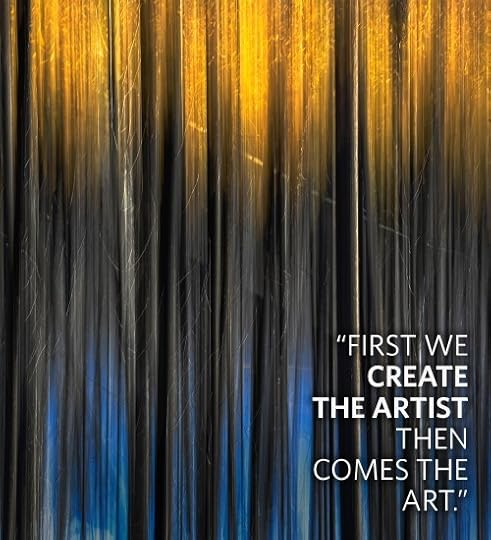 Craft can only take any of us so far. Learn all there is to know about photography and the resulting photographs themselves may get Liked on Facebook but they’re unlikely to be art. Art, to be art, has to have something of the artist within. Art uses craft to say something, to point at something, and as often as not it says something about, and points back to, the artist. What we choose to photograph, and how, says as much about ourselves as it does about the things about which we make photographs.
Craft can only take any of us so far. Learn all there is to know about photography and the resulting photographs themselves may get Liked on Facebook but they’re unlikely to be art. Art, to be art, has to have something of the artist within. Art uses craft to say something, to point at something, and as often as not it says something about, and points back to, the artist. What we choose to photograph, and how, says as much about ourselves as it does about the things about which we make photographs.
Craft matters. The better our technique, and the more technical possibilities open to us, the more likely we are to take the expression of our intent into new places. But craft is no more than a foundation if you hope to create art. The real deal, as they say, lies not in our tools, but in the myriad and mysterious little pieces that together form our creativity.
I’ve been doing a number of interviews lately, in support of the latest book, The Print and The Process. One of the questions that often comes up has to do with where we – artists, photographers - get ideas. It’s an interesting idea because it has very little to do with 99% of what gets taught in popular photography education. Sure, we’ve got an all-you-can-eat buffet of technical knowledge laid out before us, but the artists are starving for want of food, because the ideas and reasons for the kinds of photographs we make, the different compositions, moments, themes, colour palettes, and post-processing decisions, come from another place entirely.
So what do I answer when I’m asked about where my ideas and creativity come from? I answer honestly that I’ve no idea, but, wherever they come from, they always come down the same road. They come from my process: a messy place filled with more questions than answers, and more failures than success. They come, not because I know about f/stops and shutter speeds, but because I know that my process (call it inspiration, or the muse) is the most valuable asset, perhaps the only asset, I have as a creative person. Camera in hand, having learned the basics of my craft, the only thing left is to know, trust, and to whatever extent possible, understand my process.
Breaking down that process, there are things I value and nurture – fiercely – in my own creative life. To put it another way – you have to feed the muse. For me, that means aggressively protecting my creative time. It means reading several books at once, most of them unrelated to photography. It means following my curiosity. It means being open to, and pursuing, new experiences for my senses: studying art, doing things that scare me, listening to new music, exploring new food, and drinking a really great bottle of wine once in a while. It means being mindful to what my eyes take in, and living in the moment.
Without being too clever about it, I believe one act of creation is our first and most important: the ongoing creation of ourselves. We collaborate with all kinds of external forces outside our control, but our most urgent daily task is to make ourselves into the person we long to be. To do otherwise is to live passively, allowing life to shape and mold us: the victims of time, and circumstance, and the will of others. First we create the artist, then the art comes. It’s why angry art comes from angry people. Beautiful art from beautiful artists. It’s why people who focus entirely on technical perfection create perfect images that are very large, very sharp (corner to corner, and without a hint of chromatic aberration, thank you very much) but move us to nothing more than mere appreciation of their technical knowledge. Fine for some, but most of us want more.
December 21, 2012
Holiday Wishes
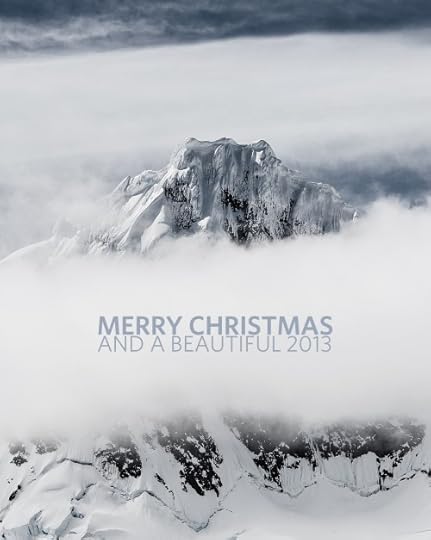 I love this time of year. I’m drinking hot-buttered rum while I write this. And on Monday we’re throwing our bags into the Jeep and heading to Whistler to quietly celebrate my birthday, and Christmas, next to a snow-covered lake under the shadow of mountains. It’s the perfect time of year to unplug from the matrix and connect, instead, with the people that matter most. Of course, that’s a tough line to draw in the snow because so many of the important people in our lives are those with whom we connect via the internet.
I love this time of year. I’m drinking hot-buttered rum while I write this. And on Monday we’re throwing our bags into the Jeep and heading to Whistler to quietly celebrate my birthday, and Christmas, next to a snow-covered lake under the shadow of mountains. It’s the perfect time of year to unplug from the matrix and connect, instead, with the people that matter most. Of course, that’s a tough line to draw in the snow because so many of the important people in our lives are those with whom we connect via the internet.
Thanks to all of you for being among those people. You’ve brought such good things into my life and the lives of the people who work with me. I hope this holiday, and the new year, brings beauty, love, and every truly good thing to you and the ones you love. I hope it brings you and I closer to doing the work we truly long for, and the freedom from last year’s fears, the ones that stopped us from fully hearing the muse, or taking the risks we knew in our hearts we needed to take. I hope it brings you the courage to say no to the things that suck your time and drain your soul. I hope it brings you surprise, wonder, laughter, and the strength to wipe the tears when things get harder than we ever imagine. I hope it brings you the capacity to be kind to yourself and to see yourself through the eyes and hearts of those who love you. And I hope it brings you wider eyes than you’ve ever had; new ways of seeing and experiencing this beautiful, too-short life.
Merry Christmas, friends.
December 17, 2012
New eBook – A Sense of Place
When I picked up the camera again after a hiatus of a couple years, it was on a trip to Haiti. It was the newness of the place, and the lack of a need to “see it again for the first time” that re-ignited a fire for me that has yet to die down. “Finding your eye” is not an easy task and it’s not easily taught, but when it becomes a way of life instead of a once-in-a-while rescue measure, it’s what photography, for many of us, is all about: learning to see. A Sense of Place is a workbook aiming directly at that: learning to experience a place fully, see it more completely, and photograph it more intentionally.
Younes Bounhar’s A Sense of Place, Finding Your Eye at Home and Abroad, was initially sub-titled, A Travel Photography Workbook, which was accurate but incomplete. This 42-spread ebook richly addresses both; mostly, I think, because Younes understands that making photographs, whether at home or elsewhere requires an ability to see and express, not just point the camera. So when he returned to his home in Morocco after an absence of several years, he was faced with making photographs in a place that was both foreign and familiar. Through this experience, beautiful photographs, and a series of excellent creative exercises, Younes does a great job of teaching what it takes to make beautiful photographs of places near and far, strange or familiar.
His eBook begins with a short section about shooting At Home, then eases into a much longer section on making photographs Abroad. It would be a mistake, however, to think that the two can be so easily separated. The skills, and exercises, needed to make compelling photographs in either place are the same. For those looking for a discussion about travelling with gear, he touches on that, but it’s so much more. If you’re looking to hone your eye, and your ability to make photographs in places both old and new to you, Younes is a patient and capable guide, though he’ll make you work for it. I’ve never once known Younes to suggest this is easy, so don’t be surprised when his exercises demand that you do the hard work, spend more time than you think you need to, and break out of your comfort zone by speaking to – and photographing – complete strangers.
If you’re looking for a primer on photography of places, this is an excellent eBook to load onto your laptop or iPad for some quiet reading in the dark cabin as your plane heads to Timbuktu, or on the subway as you head into work with your camera in your pocket.
Special Offer on PDFs
For the first five days only, use the promotional code PLACE4 when you checkout and pay only $4 OR on CraftandVision.com use the code PLACE20 to get 20% off when you buy 5+ PDF eBooks. These codes expire at 11:59pm (PST) December 22, 2012.
December 16, 2012
Building SEVEN: The Mock-Up
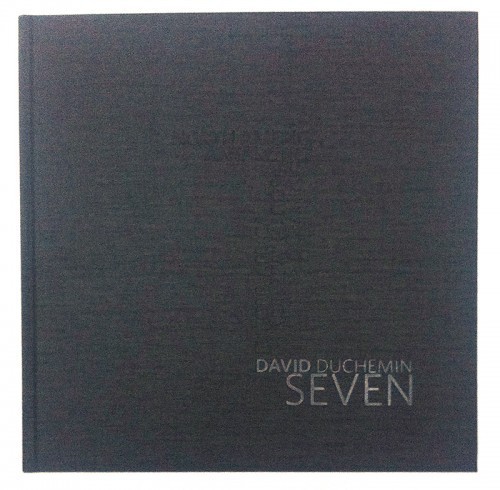
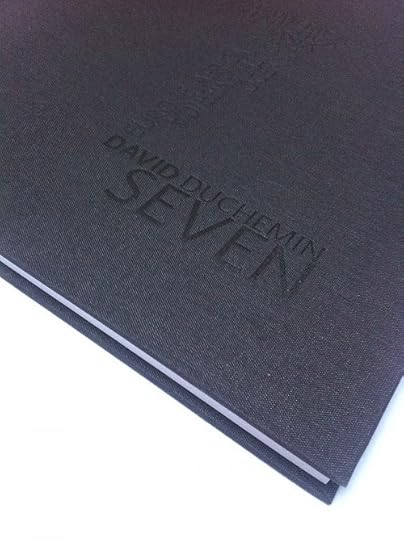
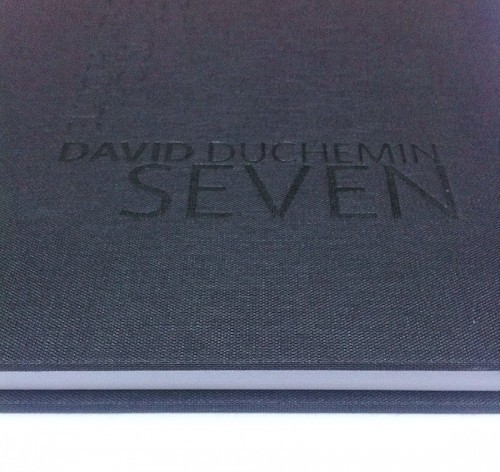 On Friday I got my hands on the mock-up of the physical book that will this spring become SEVEN, my 160-page fine-art book. If you know me at all you know I’m not given to hiding my enthusiasm and I’m pretty sure I’ve been grinning about this all weekend. The cover is embossed, and a little understated, in a warm gray Italian linen. The paper stock feels amazing in the hand. And, measuring 12 inches by 12 inches, it looks fantastic on a coffee table! The printer does this so you can live with it in your hands a while, and get a sense of the weight and feel of the book before you commit it to print. It’s done that for me. It’s also made me really impatient to get it done, though that won’t happen any sooner than planned.
On Friday I got my hands on the mock-up of the physical book that will this spring become SEVEN, my 160-page fine-art book. If you know me at all you know I’m not given to hiding my enthusiasm and I’m pretty sure I’ve been grinning about this all weekend. The cover is embossed, and a little understated, in a warm gray Italian linen. The paper stock feels amazing in the hand. And, measuring 12 inches by 12 inches, it looks fantastic on a coffee table! The printer does this so you can live with it in your hands a while, and get a sense of the weight and feel of the book before you commit it to print. It’s done that for me. It’s also made me really impatient to get it done, though that won’t happen any sooner than planned.
Now I’ve got to finish the interior. I’ve got much of the book laid out now, thought it still awaits my final images from Antarctica, Kenya, and Hokkaido as I try to get as much new and until now unseen work into this book. What I have got laid out looks great, and has helped me re-imagine some of my own work and see new themes and ideas. Some of the work is being re-presented for the first time in black & white (though in this book it’ll be duo-tones), and a good chunk of it will be work I’ve held back and not shown until now.
We also set an all-in date for me. On March 11 I will be submitting all the layout and image files and the pre-press work, like converting my monochromes to duo-tones, will begin. Then it’s on to print, for which I’ll be present, and after that to binding, and I hope to be there for that as well.
For those that have asked, pre-orders are still a while away and at this point I’m guessing it’ll be April when we make the formal announcements about pricing, special editions, and how to get your hands on one of the 1,000 copies.
December 14, 2012
Shooting in Black & White
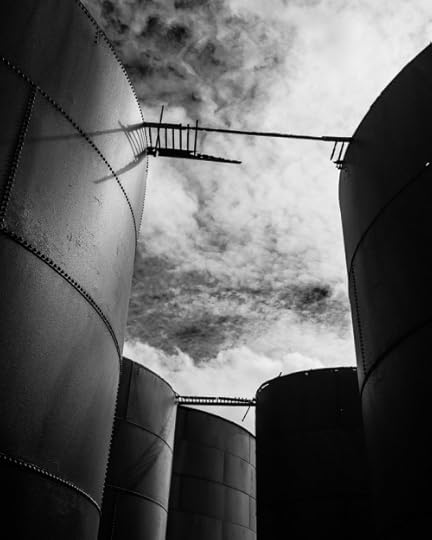
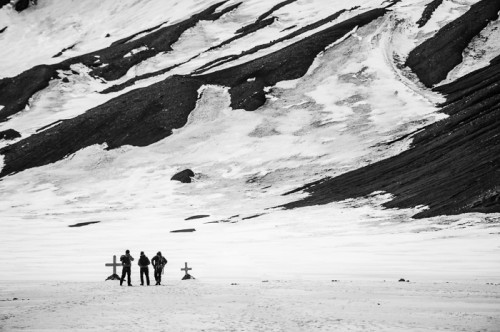 I couldn’t bring myself to shoot a single black and white image in Antarctica last year. To me the place was all about colour. This year it was very different. Last week I was on Deception Island in Antarctica, walking around an old whaling station in the crater of a still-active volcano. It’s a fascinating place, full of texture, contrasts, and decaying ghosts of the past. Last year’s weather was so different and the colours were so rich, but this year I began to feel the place in black and white. I want to tell you I saw the place in black & white, but I didn’t. I felt it. To see it I needed the camera’s help. Shooting in colour so much, I just don’t see in black and white so well these days.
I couldn’t bring myself to shoot a single black and white image in Antarctica last year. To me the place was all about colour. This year it was very different. Last week I was on Deception Island in Antarctica, walking around an old whaling station in the crater of a still-active volcano. It’s a fascinating place, full of texture, contrasts, and decaying ghosts of the past. Last year’s weather was so different and the colours were so rich, but this year I began to feel the place in black and white. I want to tell you I saw the place in black & white, but I didn’t. I felt it. To see it I needed the camera’s help. Shooting in colour so much, I just don’t see in black and white so well these days.
I set my Nikons to shoot in black and white, taking my cues from the LCD screen to get a sense for the scene, at least for a while as I re-learned what the world looks like rendered that way. When shooting in RAW, remember that when you look at the preview on the LCD you’re only looking at a small JPG version of the image. In this case, that JPG is shown in monochrome, but the RAW file is still there in all it’s full-data, full-colour glory. When you later bring the image into Lightroom or Aperture you’ll still have to do a great black and white conversion, but for anyone with difficulty seeing in monochrome, this is helpful.
Here’s how to do it simply, with a couple button-clicks on two cameras, a Nikon D800 and a Canon 5D Mk II.
On the Nikon: Menu > Shooting Menu (Camera Icon) > Set Picture Control > MC Monochrome. If you want to step it up a notch and customize this monochrome setting, like for instance, adding a tone, or more contrast, then it’s Menu > Manage Picture Control, and follow the rabbit trail to tweak the settings and create a custom picture style.
On the Canon: Menu > Picture Style (Second Red Camera icon) > Monochrome. If you want to customize it, you follow the same menu prompts, but instead of choosing Monochrome (or Standard, Neutral…) head down to one of the User Def. settings and you can tweak and save one of those.
Some of the newer cameras with electronic viewfinders take this a step further and allow you to see the scene in black and white even before you shoot it. My Fuji x100 did this for me, so did my little Leica point and shoot a few years ago. I suspect the newer xPro 1 and most of the micro 4/3 cameras do it, too. Once you’ve been shooting in black and white a while it becomes easier to see the scene in monochrome, but colour can be really seductive hard to see past; for those of us who primarily work in colour, making the switch to seeing in black & white can benefit from a little help.
If, once you’re back into Lightroom 4, you need a little help with the black &white conversions, my Lightroom 4 Develop Presets contain some solid starting points to help you get going. The Craft & Vision library also has some excellent books on the subject, all for just $5.
December 12, 2012
Desktop Wallpapers – Antarctica
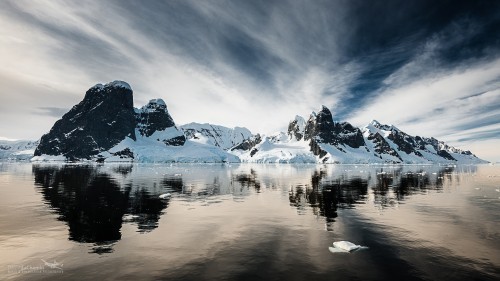
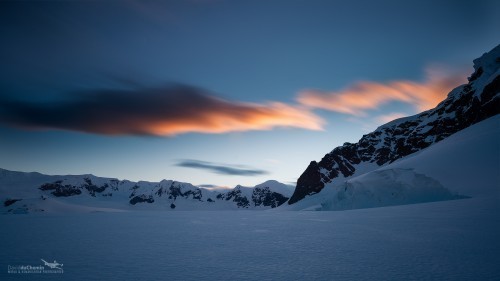 I know, it’s been a while. I hope it’s worth the wait. I stopped putting these out there because I felt I was on the edge of giving you stuff that’s already had so much exposure, or worse, of giving you photographs I wasn’t 100% happy with. Thanks for the patience. I shot these in Antarctica this month. Clicking the images will take you to 2560 x1440 images, a slightly wider aspect ratio now that the trends are favouring wider cinematic formats. I shot the second only a few feet from my bivouac site, where I spent a very short, cold, hard night sleeping under Antarctic skies.
I know, it’s been a while. I hope it’s worth the wait. I stopped putting these out there because I felt I was on the edge of giving you stuff that’s already had so much exposure, or worse, of giving you photographs I wasn’t 100% happy with. Thanks for the patience. I shot these in Antarctica this month. Clicking the images will take you to 2560 x1440 images, a slightly wider aspect ratio now that the trends are favouring wider cinematic formats. I shot the second only a few feet from my bivouac site, where I spent a very short, cold, hard night sleeping under Antarctic skies.
December 9, 2012
Antarctic Farewell
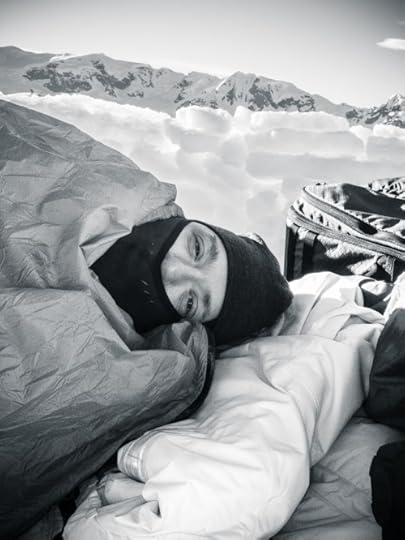
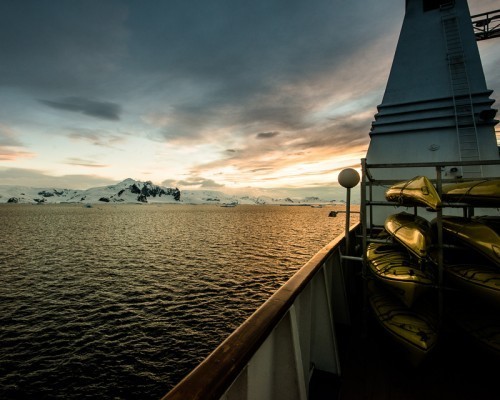
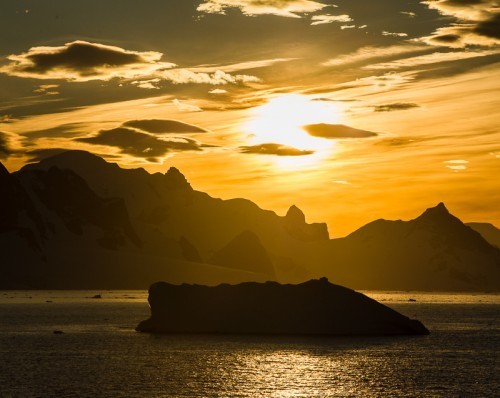 Top, Bivouacked in Antarctica. Not my warmest night ever.
Top, Bivouacked in Antarctica. Not my warmest night ever.
Antarctica and the Drake Passage are behind us now. One last day to look through our work together, then we all go separate ways. I’ve made lifelong friends here and solidified others in beautiful ways. And now we’re scheming to come back, because this is a place you fall in love with the light and land and long to return to over and over again. So a few of us have already found a 60ft sailboat to charter for a month in a couple years, to return and do this on a much smaller scale, and to go further – to the Falklands, South Georgia, and across the Antarctic Circle. It’s going to be a long wait.
My work this time is a smaller body of photographs, and much different than last year. It’s smaller because my time in Antarctica wasn’t mine alone, and different, at least in part, because the light and weather was so different, and so I encountered the place differently. I learned things too, as I always do. Aside from the usual lessons learned about my creative process and always-evolving ways of seeing, there were a couple valuable technical/logistic lessons. For example, my Nikon D800 seems to suffer from light leaks through the viewfinder on long exposure – it’s the first time I’ve had to close the shutter on the viewfinder, and if I didn’t do it, the resulting banding and pink colour cast was horrific. I also realized all too quickly that my Gitzo Ocean Traveler tripod was the wrong choice. Before I left I pulled a much larger set of sticks from my suitcase and swapped it out for the smaller one. Never again. Fortunately I could borrow a larger one for a couple shots. At full extension the Ocean Traveler is no match for pro-sized gear, snow, and Antarctic winds. Bringing the much-loathed sensor cleaning gear was a good move – I’m amazed how how dust I gathered, despite not changing lenses. My D800 generates some pretty big files and my 11″ MacBook Air handled them with dignity, but not with speed. I see a trade-in coming if I’m to keep shooting with the D800. I shot out of my GuraGear Bataflae 323L, still my favourite camera bag.
About the D800. I bought one because I wanted larger files for much larger fine-art prints. It’s a lovely camera. There’s a few features I love – like the in-viewfinder virtual horizon, which makes a world of difference. But it’s no D3s. It doesn’t handle as nicely, and the shutter sounds plasticky. And I resent having to abandon the dual CF-card set-up on the D3s in favour of one CF card and one SD card in the D800. I won’t even mention my frustration at the ever changing battery standards and the need to carry multiple chargers (oops, I kind of did…) None of these affect the image quality, which is large and beautiful, but a little large even for me. 24 megapixels would be the sweet spot for me. It performed perfectly in Antarctica.
Heading home tomorrow. The new book, The Print and the Process, is now shipping from Amazon. My fine-art book is one step closer to being done, and I’ll blog about that at some point.
December 6, 2012
Postcard from Antarctica: Deception Island
Woke this morning to new light. After more than a week of unrelenting sunshine and blue skies, the clouds finally moved in, and just in time for our landing at Whaler’s Bay on Deception Island. To me this place is moody with the ghosts of the past – a place that’s falling apart and decaying; fitting for a place once a base for whaling, a trade I’ve no respect for. Last year I couldn’t bring myself to shoot black & white in Antarctica at all, but here, this time, at Whaler’s Bay, I set both my cameras to monochrome and shot a series of black & whites. I’m really excited about this short series, which – apart from this image – will appear for the first time in SEVEN, the fine art book being published later this year.
And now we’re en route home, through two days of the Drake Passage. Then a day in Ushuaia, a day in Buenos Aires, and finally to Vancouver with a small collection of new photographs, some new friends, and some really great memories. My thanks to the group that joined me here for the last two weeks – I’d travel anywhere in the world with you.

